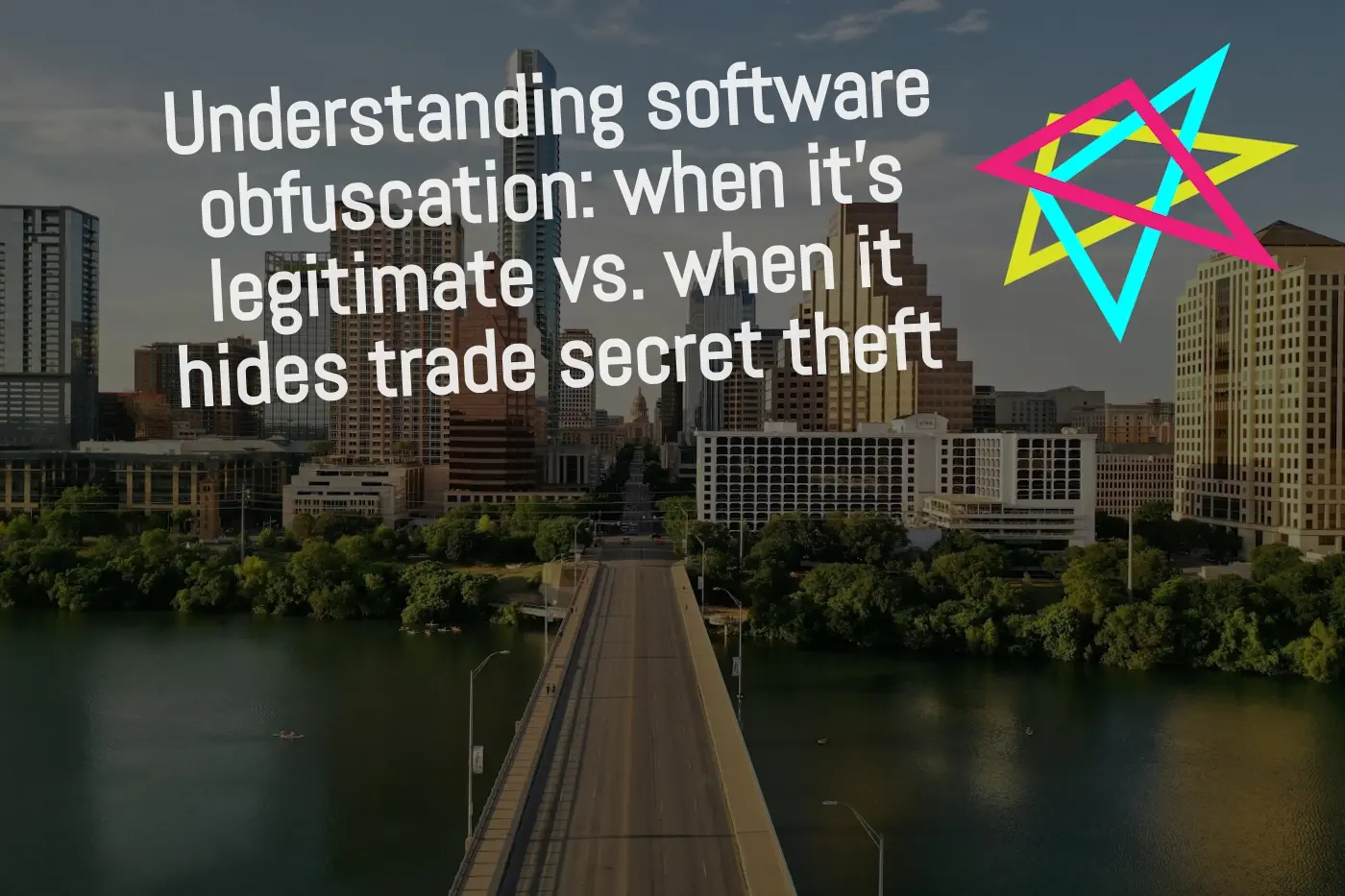
The difference between copyrighting software and patenting software
The United States government offers multiple ways to protect intellectual property rights. Intellectual property refers to creations such as inventions, literary works, designs, symbols, names and images (logos), or similar objects. There are three main types: a copyright, a patent, and a trademark (including service marks).

The United States government offers multiple ways to protect intellectual property rights. Intellectual property refers to creations such as inventions, literary works, designs, symbols, names and images (logos), or similar objects. There are three main types: a copyright, a patent, and a trademark (including service marks). Most people have heard of these three types and are generally aware of them. However, despite their uniqueness, many people confuse the three.
A copyright is an exclusive legal right to print, perform, publish, or film a literary, musical, or artistic piece. It allows a creator to receive compensation for his or her creative intellectual effort. Copyrights are submitted to and awarded from the United States Copyright Office.
In contrast, a patent is a property right granted to an individual for an invention of a new, useful, and non-obvious device, method, or process. There are several different types of patent applications that can be filed, including provisional, non-provisional, design and plant patent applications. Likewise, there are several different types of patents that can be issued, including utility, design and plant patents. The United States Patent and Trademark Office or USPTO oversees the patent application process as well as the issuance of patents.
The term trademark is used to refer to the four types of marks that can be registered with the USPTO, including trademarks, service marks, certification marks, and collective marks. Because the protection and registration of these four types of marks is essentially the same process, they are often all included under the trademark moniker. In general, a trademark is an identifying word, name, symbol, logo, or any combination thereof used by a company or entity to identify and distinguish its goods (or for services, a service mark is used). The USPTO also oversees the process of applying for and registering of trademarks.
When it comes to source code used to design and develop software programs or applications, the two applicable options are copyrighting and patenting. The idea is that software source code reads like a book, which is protected by copyright laws. However, a patent protects a concept or invention and prevents others from using or reselling it, which is something that widely-shared and easily manipulated software needs. There may be a separate need for a trademark of your software program’s name or logo, but as relating to just the source code itself, trademarks really don’t come into play.
What makes this area interesting and difficult is that the law is still evolving and refining itself to deal with the rapid growth of technology. Historically, software code was protected by a copyright. The reasoning is that a copyright protects an original work in its tangible, fixed and written form. Because at least in some form, source code can be an original work that is tangible, fixed and in written form, and a copyright covers these types of works explicitly, so it was thought a copyright would be sufficient to protect source code. Therefore, any individual who copies a work that is copyrighted is committing plagiarism and an infringement of the holder’s copyrights. However, there are exceptions to copyright violations which an inventor seeking to protect his or her source code must consider. In fact, many times copyright protections utterly fail computer developers.
Copyright laws permit “fair use” of legally protected works. This permits another individual to use, modify, adapt, and resell a copyrighted work as long as it is not “substantially similar” to the original work. This defeats the purpose of proprietary use software, which specifically prohibits the use and manipulation of the source code, because it would be very difficult to enforce one’s copyright against an infringer due to the fair use exceptions.
As such, patenting software and source code has become the preferred option and has gained wide acceptance amongst inventors and the judiciary as the primary way to protect software. Patenting allows an inventor to protect the specific concept or idea used in the source code to develop the computer program or application. This could be as complex as a substantial computer program or entire computer operating system, or as simple as a small plugin on a website which provides a unique function. A patent owner receives the property rights to exclude others from using, creating, or selling software that copies such software function, and therefore precludes others from creating, using or selling source code that performs such patented software function.
However, a software patent must be specific enough to prove it is not an abstract idea. In the latest Supreme Court of the United States’ decision, the Court applied stricter construction to software patents. In Alice Corp. Pty. Ltd. v. CLS Bank International, the Court struck down the software patents holding they were simply laws of nature, natural phenomena, and abstract ideas which are not eligible for patents.
Following this decision, many federal courts have also tightened up their application of the patent law to software patents to avoid patenting of previously invented or known functions that are now being accomplished through software source code and computers. It remains to be seen how software patent law will develop, but best practice is still to seek protections through patent law as opposed to copyright laws.










